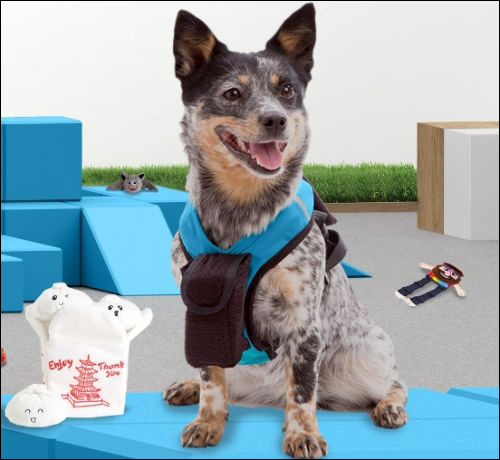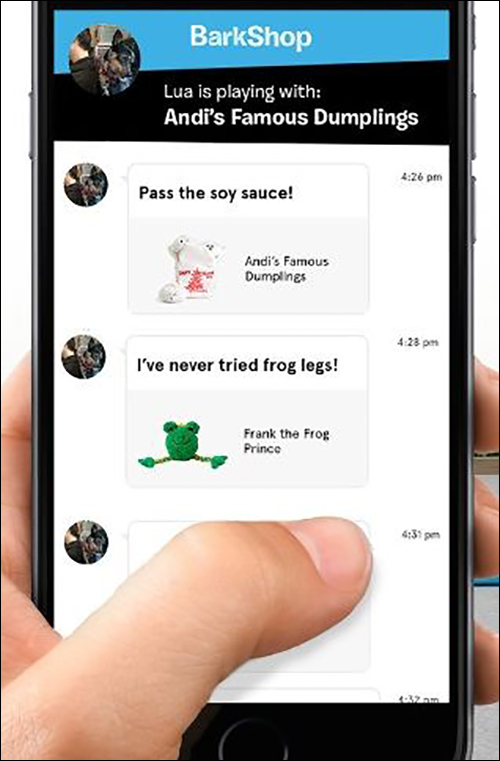Bark & Co., a provider of toys, treats, services and events for dogs and their owners, is testing an RFID-enabled popup store this week in New York City. Dubbed BarkShop Live, the store uses RFID technology designed to take shopping decisions out of the hands of dog owners and put them into the paws of their canine friends.
The popup, which will only operate for seven days (June 6-12), is an experiment for Bark & Co. Depending on the popup store’s popularity, the number of visitors that it receives, the purchases made and the excitement expressed by shoppers, the company could opt to launch similar events in New York or other cities.

“At Bark & Co., we try to do everything from the dog’s-eye view,” says Andras “Sly” Szalai, the art and technology lead at BarkShop Live. “It comes from our constant desire to know more about how our dogs see the world—and what makes them happiest.”
To shop at the popup store, a dog owner first visits the BarkShop Live website to schedule a half-hour time slot and buy a ticket. The ticket’s $30 cost can be applied toward the purchase of any products during that person’s visit to the store.
The store, located at 3 Howard St. in downtown Manhattan, includes an open play area for the dogs, filled with a variety of toys that Bark & Co. sells through its BarkShop website. Every toy contains a ruggedized, washable passive EPC Gen 2 ultrahigh-frequency (UHF) RFID tag, each encoded with a unique ID number linked to that item in Bark & Co.’s software, which resides on its own server and was developed by the company.
When an individual arrives with his or her dog, the pet is fitted with a vest containing a built-in battery-powered RFID reader, as well as an RFID tag encoded with an ID number. (Bark & Co. declines to name the makes and models of readers and tags being used.) The vest-wearing dog is then free to roam in the open play area, which can accommodate a limited number of other dogs shopping at the same time. When the dog comes within 1 to 2 feet of a toy, the reader in the vest captures its tag’s ID and forwards that data to the software on Bark & Co.’s server via a Wi-Fi connection. The software uses that information to identify which toy the dog is near, and for how long, thereby determining if the animal is playing with that toy and how long it has engaged with it, and thus indicating his or her interest.
If the dog comes within range of another vest-wearing pet, the reader also sends that data to the software. Since the dog is linked to the vest’s RFID tag ID number in the software, the system then knows which animals are spending time together.

While visiting the store, the human owners can use their smartphone’s web browser to track how their dogs interact with toys, as well as with other dogs that are also shopping. Using the web browser, Szalai explains, “allows us to quickly iterate and test ideas before we invest in developing a native application.”
The smartphone will list the toys that were of most interest to a particular customer’s dog, and invite that owner to make a purchase, by using the $30 credit he or she received upon purchasing the ticket, or by paying an additional charge if the purchase exceeds that amount. The toys are then delivered to the shopper’s home address. A customer could also use data regarding other dogs with which his or her pet spent time at the store to schedule play dates for those canine friends sometime in the future.
“BarkShop Live is meant to be a fun experiment of a new way to look at retail,” Szalai states. “We’re not really sure what’s going to happen, but we are pretty sure it will be awesome.”


